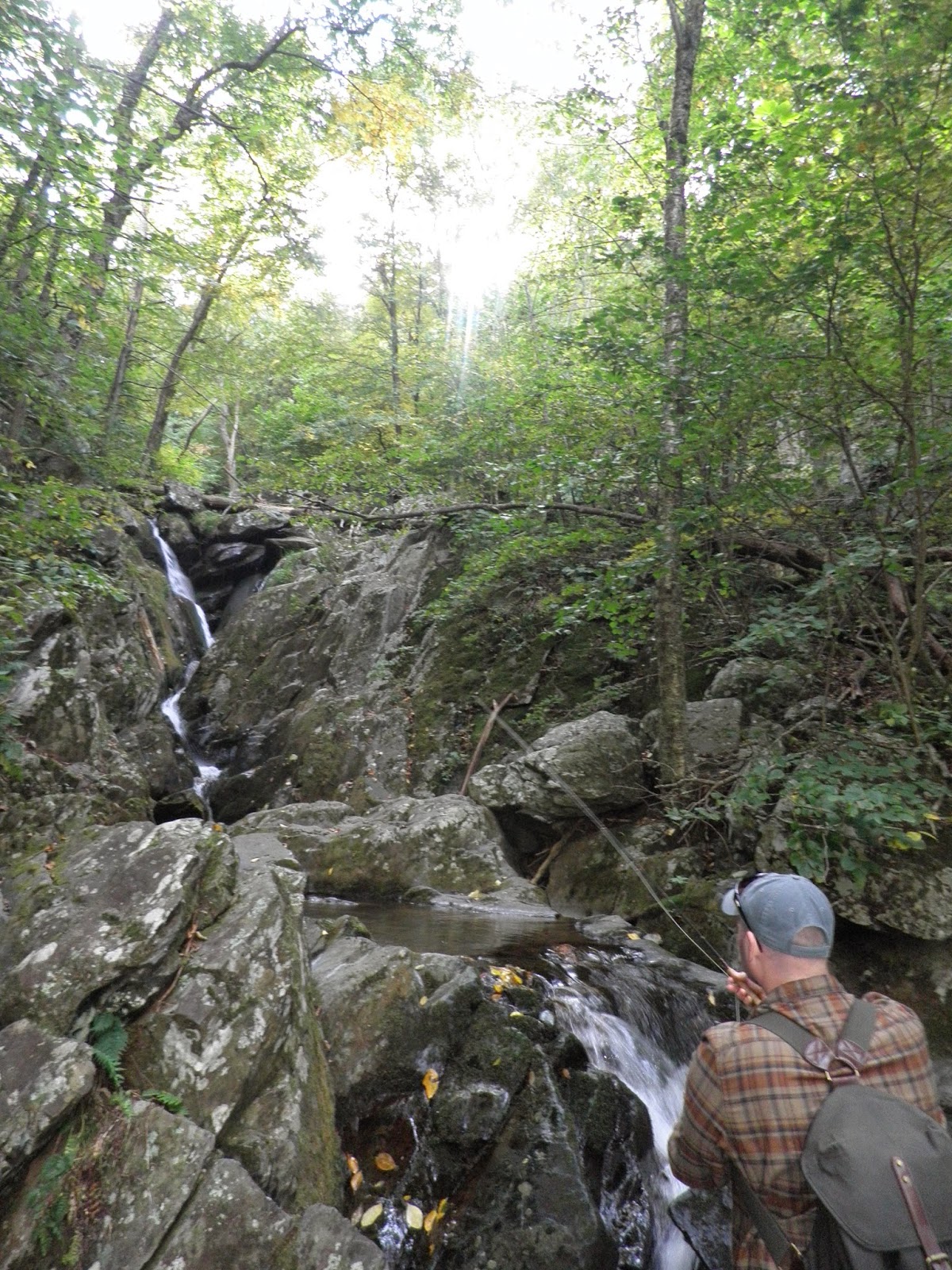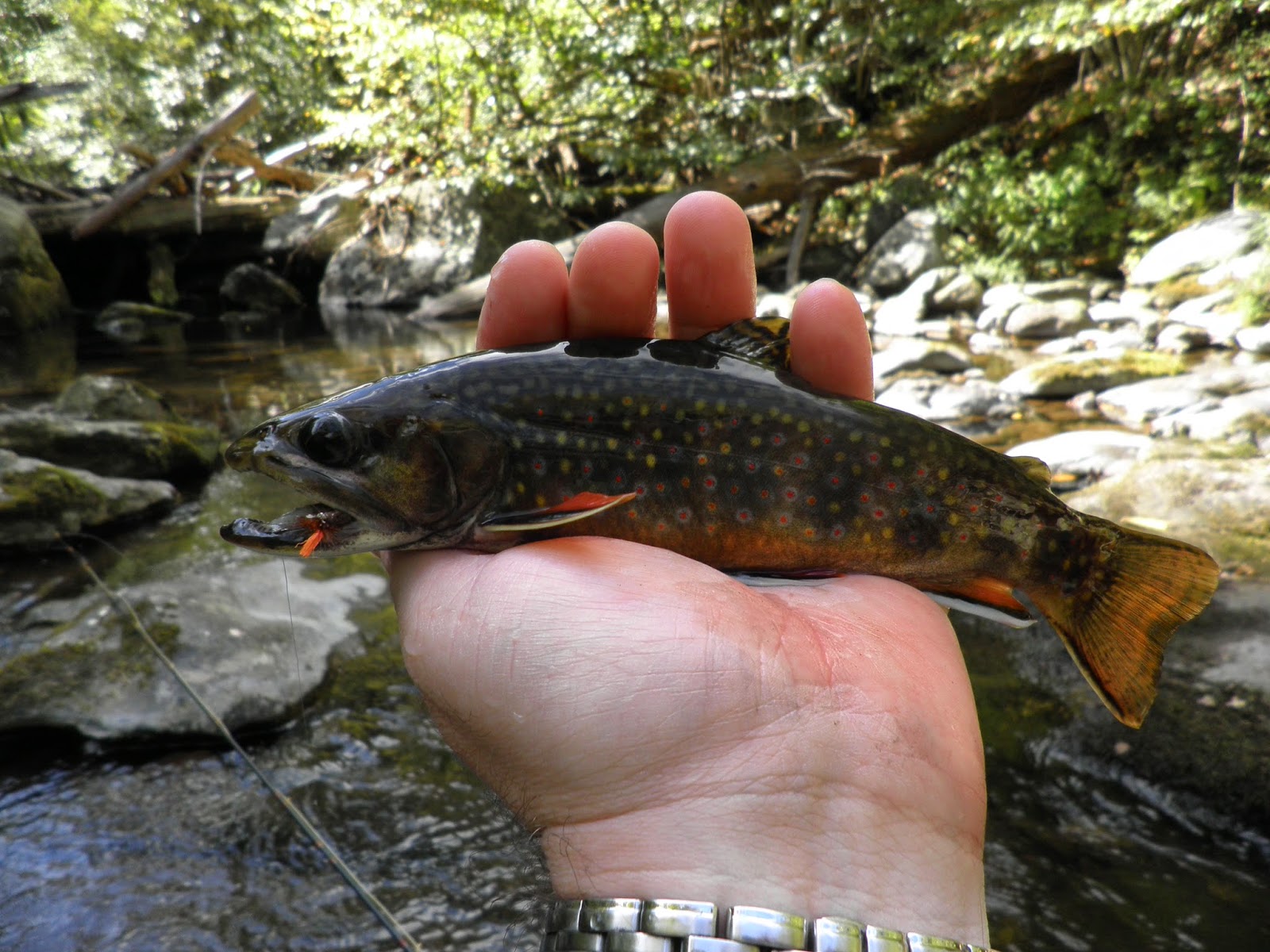Shenandoah National Park, Virginia, USA
In the last
week of September 2013 I drove the stunning Skyline Drive through Shenandoah
National Park in the state of Virginia, USA. I've only just had a chance to
post up a few photos and write a few words now. Better late than never I guess.
The Park is
perhaps most famous for its annual display of autumnal yellow and red when its trees
change colour before shedding their leaves at the onset of winter. We were
about two or three weeks too early to catch the full extent but we did see the very
early signs of this attractive spectacle.
I pretty much
had two goals upon arriving at the park – to find brook trout and to spot a
black bear. I'm happy to report that I managed to accomplish both!
The Skyline Drive runs 105 miles in a north-south direction along the crest of the Blue Ridge Mountains in the Shenandoah National Park and is the only public road through the park. We entered at Rockfish Gap, at the very southern end of the drive with two nights scheduled in the park before we were due to head on to Washington DC. We checked in to our rustic log cabin at Skyland Resort after a pleasant drive of about 2 and a half hours taking in the views along the crest of the ridge. The speed limit is 35 mph, and the road winding, so the going is slow but you wouldn't want to drive any faster in a place like this. Deer, wild turkey, squirrel and chipmunks scurrying across the road also act as effective traffic calming measures.
Having set aside that afternoon for fishing I needed to find some water. Park maps showed countless blue lines descending the hollows of the eastern and western slopes. Some streams are more accessible than others and are conveniently reached from the road or hiking trail. The most easily accessed are heavily fished. Other streams require a bit more adventure and effort to reach but what they all have in common is a walk of varying degree and strenuousness down the slopes to the stream and then back up to the road. Trying to decide where to fish in a limited time and avoid a wasted hike presented a bit of a mild headache. I found Harry Murray's book "Trout Fishing in the Shenandoah National Park" (available from park stores) instrumental in making the decision a little easier. I briefly consulted Murray's book on the porch of our log cabin and settled on the Rose River, a short distance away. The fact that the access point was a parking area at "Fisher's Gap" was taken as a propitious sign.
Having set aside that afternoon for fishing I needed to find some water. Park maps showed countless blue lines descending the hollows of the eastern and western slopes. Some streams are more accessible than others and are conveniently reached from the road or hiking trail. The most easily accessed are heavily fished. Other streams require a bit more adventure and effort to reach but what they all have in common is a walk of varying degree and strenuousness down the slopes to the stream and then back up to the road. Trying to decide where to fish in a limited time and avoid a wasted hike presented a bit of a mild headache. I found Harry Murray's book "Trout Fishing in the Shenandoah National Park" (available from park stores) instrumental in making the decision a little easier. I briefly consulted Murray's book on the porch of our log cabin and settled on the Rose River, a short distance away. The fact that the access point was a parking area at "Fisher's Gap" was taken as a propitious sign.
We parked at Fisher's Gap and crossed the road to descend the eastern slope to the river, leaving the bright sunshine and noise of passing traffic behind as we entered the cool forest. After a short walk into the trees we encountered an elderly couple
hiking up the gravel track who told us to look out for a group of five black bears
about 100 metres down the road. This brought about a mild panic – we had
expected to see bears from the relative safety of a car with the opportunity of
a swift getaway! Do you play dead if attacked? Wait a minute, that's only for grizzly bears,
right? What are you meant to do if a black bear attacks you? The couple seemed pretty relaxed about the proximity of the bears and
mildly amused by our panic and advised it was perfectly safe unless we happened
to surprise the bears. If by unfortunate chance we did happen to surprise them,
we were told all manner of bear-fury would unleash itself upon us, so best not
to.
We set off down the track trudging along as loudly as possible and it's
probably no surprise that we encountered no bears by the time we reached a small stream about a mile down the path. A waterfall carving a course through a lichen and moss spotted rock face provided a dramatic backdrop to a series of small cascading
pools at its base which all looked inviting for a dry fly and I assumed it was the Rose River. As it turns out, I realised afterwards that this was probably the Hogcamp Branch, a feeder stream of the Rose which is described in Murray's book as "a nice stream, but due to its easy access from the drive it receives heavy angling pressure." I later gathered the larger Rose River was about a mile further down the path. It mattered not though as I enjoy fishing little streams and I set up my rod excitedly and soon caught a perfect little brook trout from the shallow pool next to the path. The next hour proved
the theory that "stealth + dry fly = brook trout". My few experiences of catching these little fish has taught me that a well-presented
dry fly is irresistible to them. It amazed me how many fish lived in these tiny, clear pools and despite Murray's warning of heavy interference from anglers they were eager to take a fly.
 |
| My first Virginia/Shenandoah trout! |
On the walk
back up the hill, my appetite for brook trout slaked, we did see a black bear
with two small cubs a short distance into the dense trees and it was a
fascinating experience in the complete quiet of the woods to observe them (nervously
at first it must be said). We went unnoticed for minutes until the mother bear eventually
saw us and cleared off rapidly with her cubs. It was reassuring to discover
that the bears appeared more nervous of us then we were of them. The fully
grown bear was also much smaller than I had expected.
 |
| The best photo of the bears - you will have to take my word for it that they are there! |
We chose to
hike down to Rapidan Camp the following day, the scene of Herbert Hoover's
presidential retreat between 1929 and 1933. It turns out Hoover was a keen fly
fisherman who saw much of virtue in the sport. When Hoover found the
Depression too depressing, he went fishing (I unashamedly borrowed this
phrase!). In a speech delivered in 1929 Hoover stated:
"Moreover, [fishing] is a constant reminder of the democracy of life, of humility, and of
human frailty - for all men are equal before fishes. And it is desirable that
the President of the United States should be periodically reminded of this
fundamental fact - that the forces of nature discriminate for no man."
When
selecting his retreat Hoover had given his aides three criteria: the location
had to be within 100 miles of Washington DC, it had to be more than 2,500 feet
above sea level to avoid the summer heat and mosquitoes and, most importantly,
it had to be on the banks of a trout stream. Not much is left of the
presidential retreat today but the unimpressive looking main house (referred to as "The Brown
House") has been fully restored and one or two outbuildings remain. The
next president, Franklin D. Roosevelt found the Camp too rustic for his
wheelchair needs and established Camp David during his administration which
serves as the country's presidential retreat until this day. Hoover's camp fell
into a state of disrepair. Jimmy Carter was the next and only other
president to visit and fish the Rapidan.
The Camp is on the headwaters of the
Rapidan River where the Mill Prong and Laurel Prong meet and where Hoover and
his guests would go fishing for stocked and wild trout. It's a 4 mile round
trip hike down to the Camp, mostly along the banks of the tiny Mill Prong. The
Mill Prong gains enough volume before the Camp is reached to cast a fly and I was
able to tempt a brookie or two along the descent. We saw more black bears along
the way, and were now completely relaxed in their presence!
 |
| The best of the day 2 bear photos... the black object in the centre... again you will have to take my word for it... |
After a guided tour of the Brown House I fished the Rapidan for about an hour and a half in complete solitude and caught a number of good sized brook trout. It's not an easy stream to fish, overgrown, swiftly flowing and boulder strewn there is often only a small area of water to land your fly on before the torrent whisks it away. The trout strike hard and fast. Even in the last week of September the heat had a sticky oppressiveness to it. A small brown para-ant worked best.
 |
| The Rapidan |
It was an enjoyable experience made all the more memorable by the thought of following in the fly fishing footsteps of American presidents.


















Comments
Post a Comment
Thank you for taking an interest in my fishing diary. I appreciate your feedback.